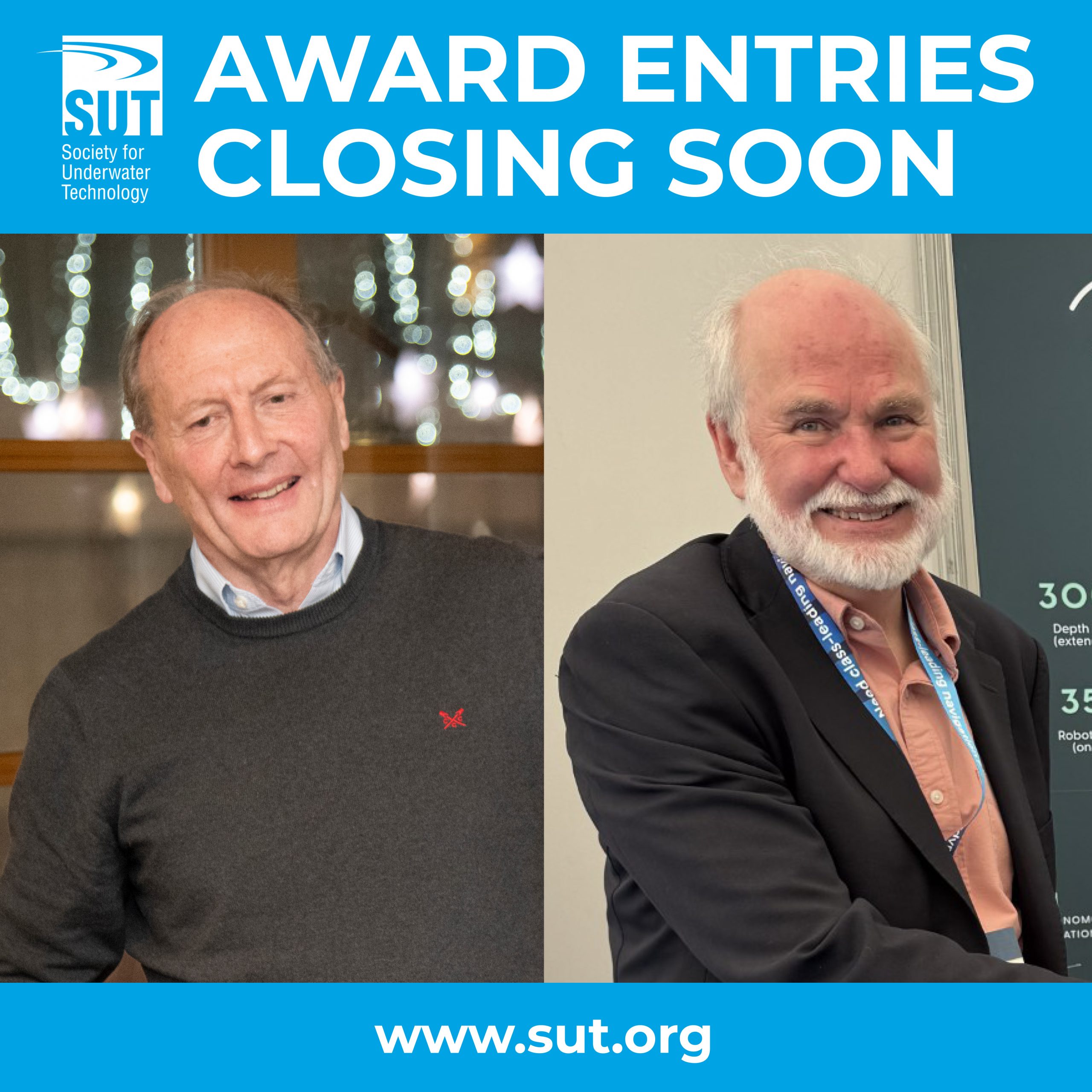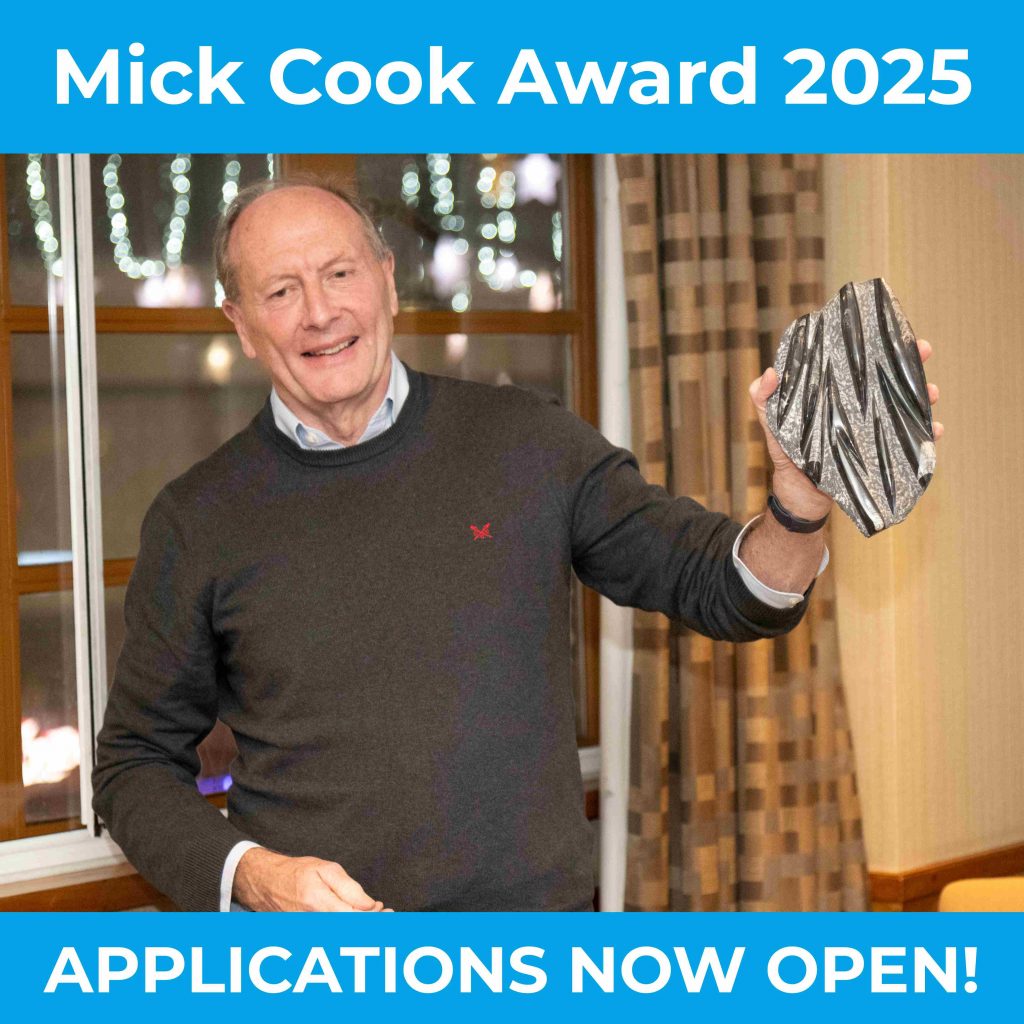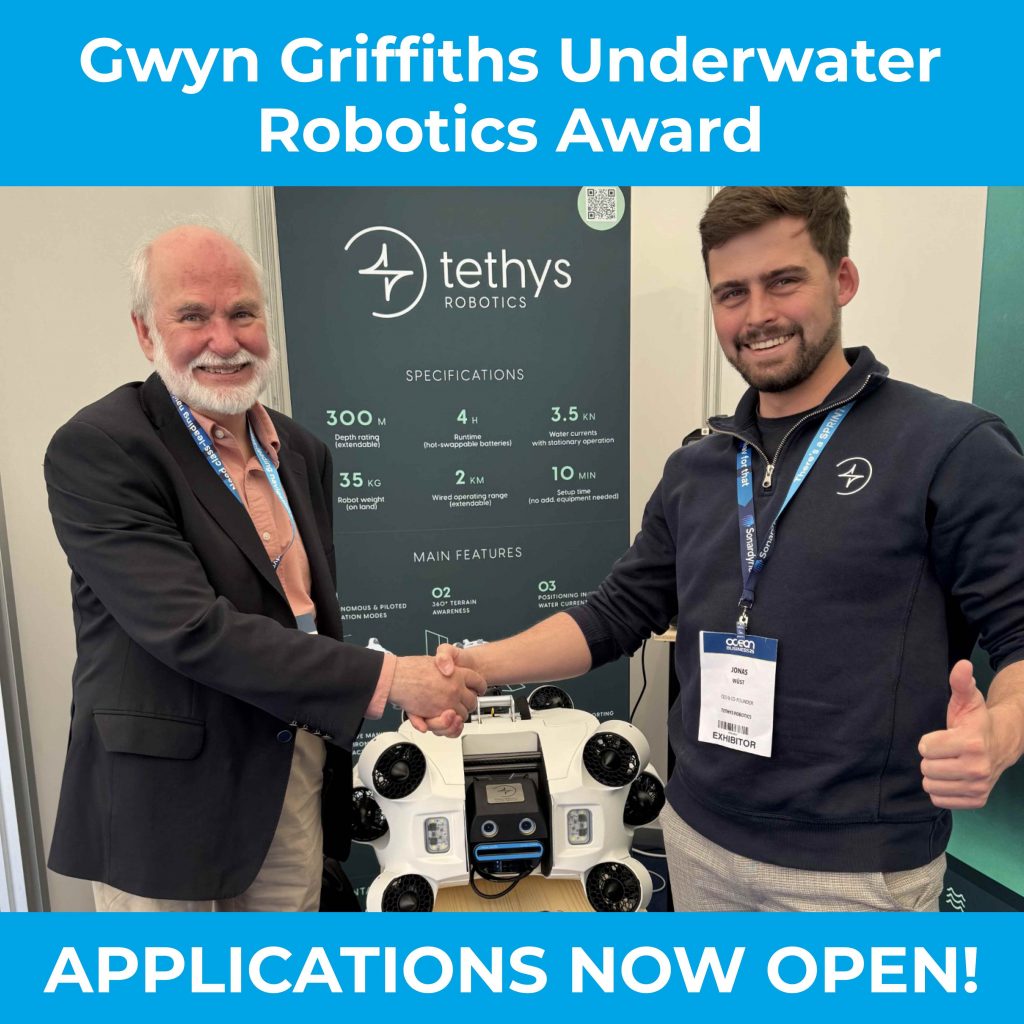Nomination deadline looms for two key SUT awards

- Underwater Robotics and Marine Site Investigation in the spotlight
DEADLINE EXTENDED: Mick Cook Marine Site Investigation Award Deadline extended to 2 February 2026.
The 31 October deadline draws close for the Gwyn Griffiths Underwater Robotics Award.
The Mick Cook Marine Site Investigation Award
The Mick Cook Marine Site Investigation Award. (established in 2023) is open to all working in the field of marine site investigations and characterisations globally, regardless of where they are in their career, the award recognises industry professionals who have made a significant contribution to Marine Site Investigation and Characterisation, covering the broad disciplines of Geophysics and Geotechnics. The winner will receive £1000 and a certificate.
Previous winners are Geotechnical Consultant Tor Inge Tjelta and Philippe Jeanjean, Senior Advisor, Geotechnical Engineering at bp.
Further information on both awards and entry forms are https://sut.org/about-the-sut/sut-awards/.

The Gwyn Griffiths Underwater Robotics Award
The Gwyn Griffiths Underwater Robotics Award, established in 2021 recognises people in the early to mid-stages of their career (and under 40 years old) who have made outstanding contributions to their field in underwater robotics. The award may be for industry/commercial, research and/or creative activity in underwater robotics. The winner will receive £500 and a certificate.
Previous winners are Aleksandra Tomaszek MBA, 1 CSI Ltd Co-founder & COO, Strategic Subsea Business Partner; Rustom Jehangir, Founder and CEO at Blue Robotics; and Jonas Wüst, CEO & Co-Founder of Tethys Robotics.

Entry criteria are the same for each of the much-coveted awards:
- A letter of nomination or application that describes how the candidate meets the criteria.
- The letter should be no more than two pages in length. Supporter(s) of the nomination/ application may add their signature to this letter or supply an email that indicates their support for the candidate
- A 100-word summary or appraisal of the candidate’s research describing their contributions in a way easily understandable to those outside the discipline
- A curriculum vitae
”We urge members and non-members alike from all over the world to get to work with their entries, which can be self-nominated or from colleagues or friends. The awards will be announced at the SUT AGM on 4th December in London. Presentations to the winners will be made to fit in with the Awardee’s movements and in conjunction with SUT event attendance, such as at Oceanology International 2026 next March in London, or All-Energy next May in Glasgow,” explained Cheryl Burgess, SUT’s CEO.
“We are extremely grateful to both Gwyn Griffiths and Mick Cook for their generosity in founding these awards, the focus they have highlighted on the disciplines of underwater robotics and offshore site investigations and geophysics/geosciences. We look forward to a great many high-level nominations.”
The Society for Underwater Technology (SUT) is a multidisciplinary learned society that brings together organisations and individuals with a common interest in underwater technology, ocean science and offshore engineering. It was founded in 1966 and has members from more than 40 countries, including engineers, scientists, other professionals, and students working in these areas. In recent decades many SUT members have come from the offshore hydrocarbon sector, today there are growing numbers of members from offshore renewables, marine autonomous systems, and the policy, law and insurance sectors who support offshore activities of many kinds.
Corporate, individual and student membership is available. Full information on the Learned Society, including membership details is at https://sut.org//
Background to the awards
The Gwyn Griffiths Underwater Robotics Award
When this award was created, Neil Bose, past Chair of the Panel on Underwater Robotics stated: “Members of the Panel on Underwater Robotics were excited by Professor Gwyn Griffiths’ generosity in supporting this award and were especially enthusiastic that it should be an early to mid-career award to encourage the up-and-coming generation of underwater robotics workers in their careers.“
And Gwyn Griffiths MBE, a Past President of the SUT added: “As a vibrant, forward-looking learned Society the SUT is at the forefront of encouraging and facilitating international cooperation in Underwater Robotics. From my own career, I know that peer recognition of achievements through an international Award can make a substantial and lasting difference. These have been times for reflection, and by enabling this new Underwater Robotics Award I am delighted to support the innovators of today and tomorrow.“
The Mick Cook Marine Site Investigation Award
When the award being his name was launched, Mick Cook, a long-standing member and former Chair of the OSIG (Offshore Site Investigation and Geotechnics) Committee, as well as being a Past Treasurer and Council Member of the SUT, explained the reasons behind the new SUT Award: “From my own lengthy and rewarding career and involvement with SUT’s OSIG Committee I know the value and importance of peer-recognition of achievements and contributions through an International Award can make to both individuals and industry.”
“I am delighted to be able to sponsor this Award and support all those who contribute to the field of geotechnics and geophysics from yesterday, today and tomorrow.”
Members of the OSIG Committee and some of the sector’s key stakeholders and award panel members Neil Morgan, Professor Richard Jardine, and Andy Hill. Aired their views:
Neil Morgan, Chair SUT, OSIG Committee and Lloyd’s Register, Principal Geotechnical Engineer, Technical Support Office, Marine & Offshore said: “The launch of this award is welcome news. It will encourage those working in the offshore geoscience industry to develop what will be needed in the future. The energy transition means we will see ever-increasing demands for marine site investigation and characterisation. This will be against a background of shortages of skilled resources and equipment to perform the work and interpret the results.”
“The resource constraint means getting the maximum value from data will be essential and it will also be essential that the data acquired can be applied to large scale developments with rapid project timelines. Innovation and creativity will be needed to ensure the offshore geoscience community fulfils the future needs of offshore energy stakeholders in a reliable and cost-effective way.”
Richard Jardine FREng, FICE, FCGI, Professor of Geomechanics, College Proconsul, Imperial College London explained: “The creation of a new SUT Award, funded by Mick Cook, to recognise each year a particularly Significant Contribution to Marine Site Investigation or Characterisation, covering the broad disciplines of Geophysics and Geotechnics represents a highly encouraging, positive and timely development.
“Mick has made his own important contributions through a long career in these fields, taking part in developments that are proving crucial in realising successfully the imperative international drive towards low cost, low carbon, energy.”
“Mick’s unstinting work with the SUT Offshore Site Investigations and Geotechnics (OSIG) committee, their guidance notes, short courses and internationally leading conferences has been one of the factors behind the UK’s excellence and prominence in the practical, industrial, scientific and academic aspects of geotechnical engineering for sustainable offshore energy production.”
While Andy Hill, Marine Geohazards Technical Authority – S&ORA, BP America added
“News of this award is very timely as the importance in the delivery of efficient and effective Integrated Offshore Site Characterization has rarely been as important as it is now.”
“Mick Cook has been directly involved in the development of offshore site investigation rationale over the past forty years in projects around the world. For much of this time he has been involved with the Offshore Site Investigation Committee of the SUT and a driving force behind a number of its outputs – most recently the Guideline Document for the Planning and Execution of Geophysical and Geotechnical Ground Investigations for Offshore Renewables which is an important resource in supporting the development of staff entering this sector.
“This award will go further in encouraging staff to make their mark in the industry over the next decade by continuing to push technology and technique forwards.”